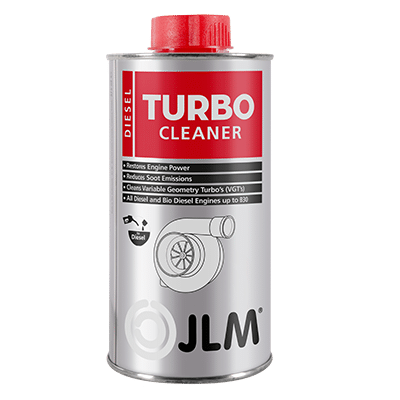Finding the engine oil leaking from your car can be alarming, and ignoring it can lead to costly damage. Identification and early action of oil leaks will protect your wallet and your car. But what causes oil leaks, and how can you fix them?
In this guide, we’ll explain everything you need to know about oil leaks, as well as other common leaks, including the common causes, how to identify them, and tips for prevention. Don’t wait for a minor issue to turn into a major repair—read on to save yourself expensive garage costs with JLM.
What is an oil leak, and why is it dangerous?
An oil leak occurs when oil escapes from your vehicle’s engine, often leaving visible drips or stains under your car. Aside from being messy, oil leaks are dangerous. Oil leaks can cause the following:
- Engine overheating due to insufficient lubrication.
- Increased wear and tear on engine components.
- Potential fire hazards if oil contacts hot engine parts.
Addressing oil leaks early is essential to keeping your car running smoothly and avoiding expensive repairs.
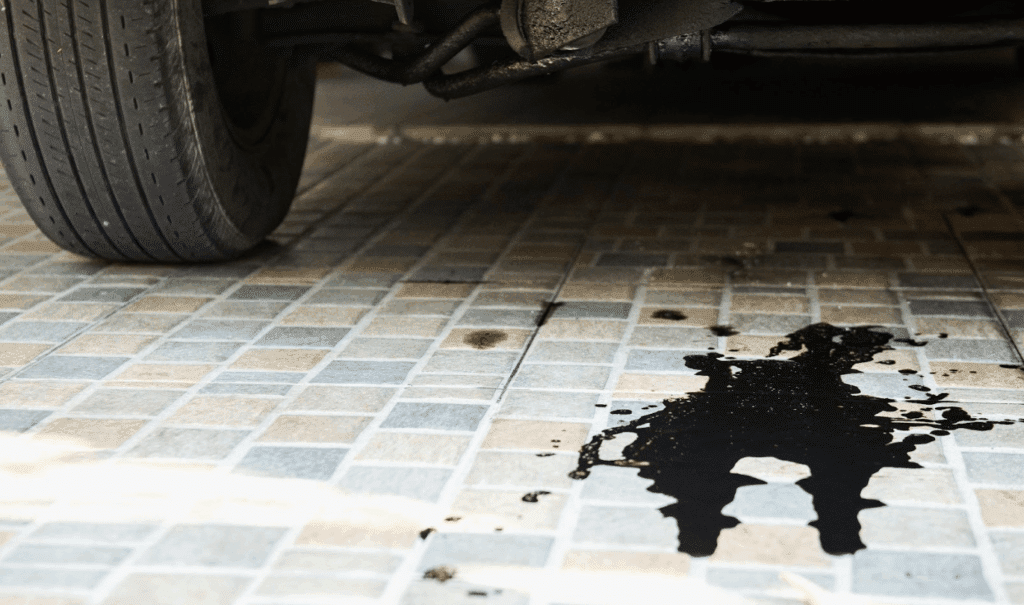
The different types of leaks including oil leaks
There are several different types of leaks that your car may experience. The most common leaks, their appearance, cause, symptoms, and possible impact have been listed here:
Engine oil leak
- Appearance: Brown to black and greasy. Often appears under your car after parking.
- Cause: Damaged gaskets, seals, or a loose oil filter.
- Signs: You may notice low oil levels, an engine oil warning light, darker smoke coming from the vehicle, a burning smell, a knocking sound from the engine, or engine overheating.
- Danger: Increased wear and tear, as well as a reduction in engine efficiency and an increased risk of breakdowns. This may also pose a health risk due to exposure to the oil and can be a fire hazard.
Brake fluid leak
- Appearance: Light yellow to dark brown fluid under your car, often appears near the wheels.
- Cause: Worn seals, hoses, or a compromised master cylinder.
- Signs: The brake pedal may feel soft or spongy, the brake warning light may come on, low brake fluid levels, and a fishy smell coming from the brake fluid.
- Danger: Affects braking efficiency, posing a significant safety risk.
Coolant leak
- Appearance: Colourful fluid, often green, orange, or pink and sweet-smelling. A coolant leak is usually found under the engine.
- Cause: Damaged radiator hoses or a cracked radiator.
- Signs: An overheating engine with a rising temperature gauge or warning light, low coolant levels, and white smoke from the exhaust.
- Danger: Can lead to engine overheating, head gasket failure, decreased fuel efficiency, and heater issues.
- Anti-freeze leaks are often similar to this.
Power steering fluid leak
- Appearance: Red, brown, or pink and oily. Found under the front of your car.
- Cause: Worn hoses or seals in the power steering system.
- Signs: You may experience steering issues such as a stiff or vibrating wheel, whining or grinding noises, a steering warning light may come on, or the fluid level may be low.
- Danger: Difficulty controlling and steering your vehicle, posing a significant risk to yourself and others.
Transmission fluid leak
- Appearance: Dark spots, usually red, pink, or brown and slightly thick with a sweet smell. Often found where a car has been parked.
- Cause: Worn seals or damaged transmission components.
- Signs: You may experience low transmission fluid levels, a warning light on the dashboard, gear slippage, gear noises such as grinding, vibration of your vehicle, and poor acceleration.
- Danger: Slipping gears and reduced acceleration power, which can make your vehicle difficult to drive.
Common engine oil leak locations & how to identify them
How to identify an oil leak
The best way to identify is by knowing what to look for. We briefly mentioned some of the signs of an oil leak previously but have included a comprehensive list of all the symptoms you may notice when experiencing an oil leak below:
- Oil puddles or stains under your car.
- Residue around gaskets.
- A burning oil smell.
- Smoke coming from the front of your engine or exhaust.
- Warning light on your dashboard signifying that oil levels are low.
- Low oil levels.
- A paler oil or a change in texture such as foamy, milky, or frothy oil.
- A knocking sound coming from your engine.
How to locate an oil leak
Once you have concluded that you have an oil leak, you will next want to identify where the leak is coming from. The following locations are often the most common places you will find an oil leak:
- Oil filter gasket: Oil filter leaks often occur due to a loose or improperly tightened gasket. Tightening the filter to the manufacturer’s specifications usually resolves the issue.
- Oil pump gasket: External oil pumps, bolted to the engine block with a gasket, can develop leaks as the gasket wears out. Insufficient oil in the pump can lead to serious engine damage, so addressing leaks promptly is critical.
- Oil pan gasket: The gasket between the oil pan and engine block is prone to leaks due to pressure, vibrations and thermal expansion. Loose bolts can also cause oil to seep out. Regularly checking and tightening bolts to the correct torque can help prevent leaks.
- Rocker cover gasket: Leaks often occur where the rocker cover meets the cylinder head. Ensure the bolts are properly tightened to secure the gasket and prevent oil seepage.
What causes an oil leak in a car?
After discovering that you have an oil leak, you may wonder what can cause an oil leak. Several factors contribute to oil leaks, including:
- Worn seals and gaskets: Over time, these components degrade, leading to leaks.
- Loose oil drain plug: After an oil change, a loose or misaligned drain plug can cause leakage.
- Overfilled oil: Excessive oil pressure can force oil past seals.
- Damaged oil pan: Hitting debris or rough terrain can crack the oil pan.
- Improper maintenance: Skipping oil changes can lead to sludge buildup, damaging seals.
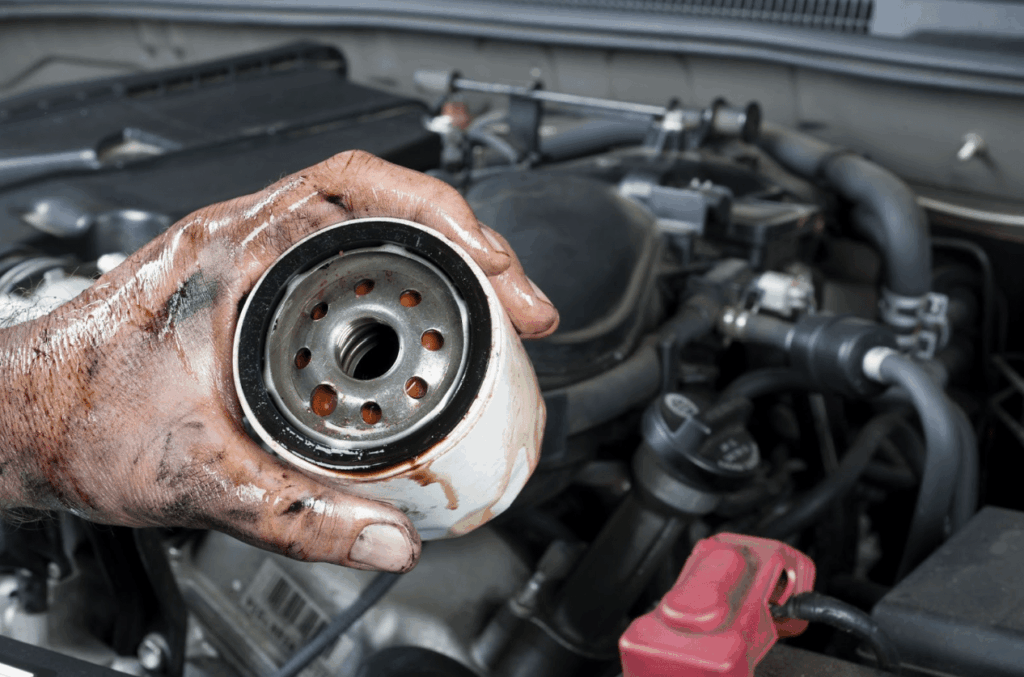
How to fix an oil leak
The options when fixing an oil leak depend on its severity and the source of the problem. Sometimes you may just need a component tightening, other times you may need a full part replacement. Below we have explored the different options to cover the various types of oil leaks.
Solutions for minor oil leaks with JLM
For smaller and less severe oil leaks, JLM products like JLM Engine Oil Stop Leak can provide an effective, affordable fix. This product works by rejuvenating seals and reducing oil loss, though it won’t fix severe issues like cracked blocks or heads which will require mechanical repair.
Other helpful oil products include:
- JLM Engine Oil Flush: Clears sludge and debris, helping prevent leaks from forming.
- JLM Engine Oil Stop Smoke: Reduces smoking caused by oil burning.
- JLM Bortec Oil Additive: Protects seals and improves engine lubrication.
Professional repairs for major oil leaks
Severe oil leaks often require mechanical intervention, such as:
- Replacing gaskets or seals: Damaged components need replacement to stop leaks.
- Repairing damaged parts: Cracked oil pans or timing covers may need welding or replacement.
- Engine rebuild or replacement: For catastrophic failures, this may be the only option, though it’s costly.
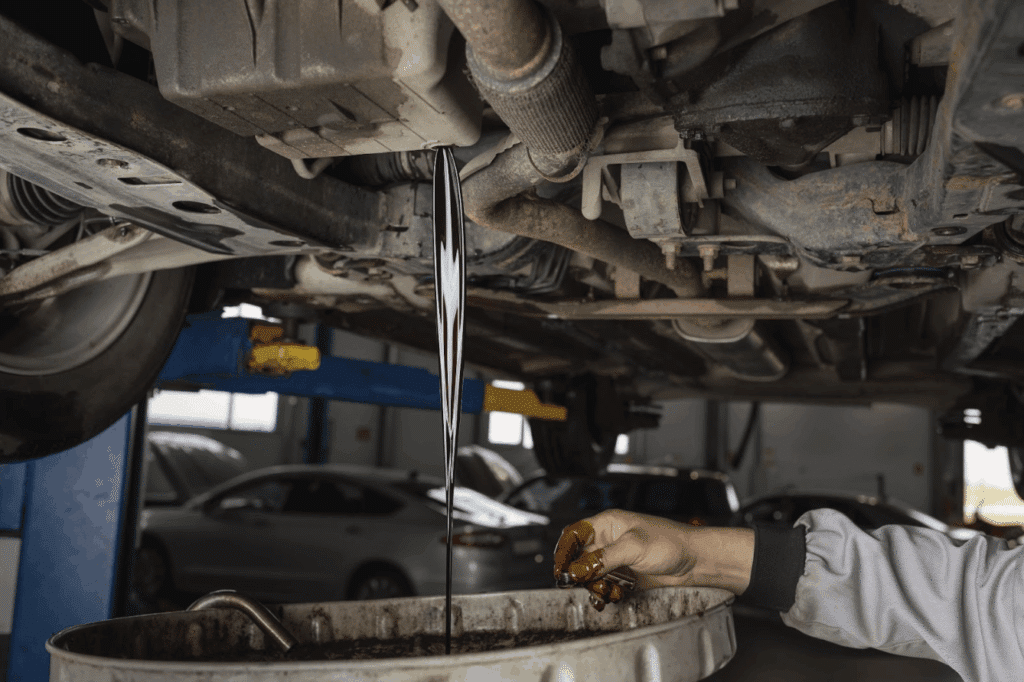
What is the price to fix an oil leak?
The repair cost to fix an engine oil leak varies significantly depending on the severity and source of the problem.
- Minor repairs such as using JLM Engine Oil Stop Leak: can be as little as under £15.
- Major repairs (e.g., replacing an oil pan): £200–£1,000.
- Severe engine damage: starting from £1,000 but can go significantly up to around £6,000 or more depending on the issue, car type and age.
Addressing leaks early with preventative measures can save you thousands in the long run.
How to prevent an oil leak
The best way to avoid an oil leak is prevention, saving you money and time. To help prevent an oil leak, you can do the following:
- Regular oil changes: Use high-quality oil and change it as recommended by your vehicle’s manufacturer.
- Use preventative products: Additives like JLM Bortec Oil Additive can protect seals and improve engine lubrication.
- Flush the engine system: Products like JLM Engine Oil Flush remove contaminants that contribute to leaks.
- Inspect regularly: Check your car for leaks and address any signs of trouble promptly.
Routine maintenance and quality products are your best defence against leaks.
Common engine oil leak FAQs
Can I drive with an oil leak?
Driving with an oil leak is not recommended. It can cause engine damage or even result in a fire if oil contacts hot components.
Is an engine oil leak serious and dangerous?
Yes, oil leaks can lead to overheating, increased wear on engine parts, and fire hazards, making them both dangerous and expensive if ignored.
Can you just keep adding oil if you have an oil leak?
While topping up oil may help temporarily, it doesn’t address the root cause. Left unresolved, the leak could worsen, cause further damage and lead to very costly repairs.
